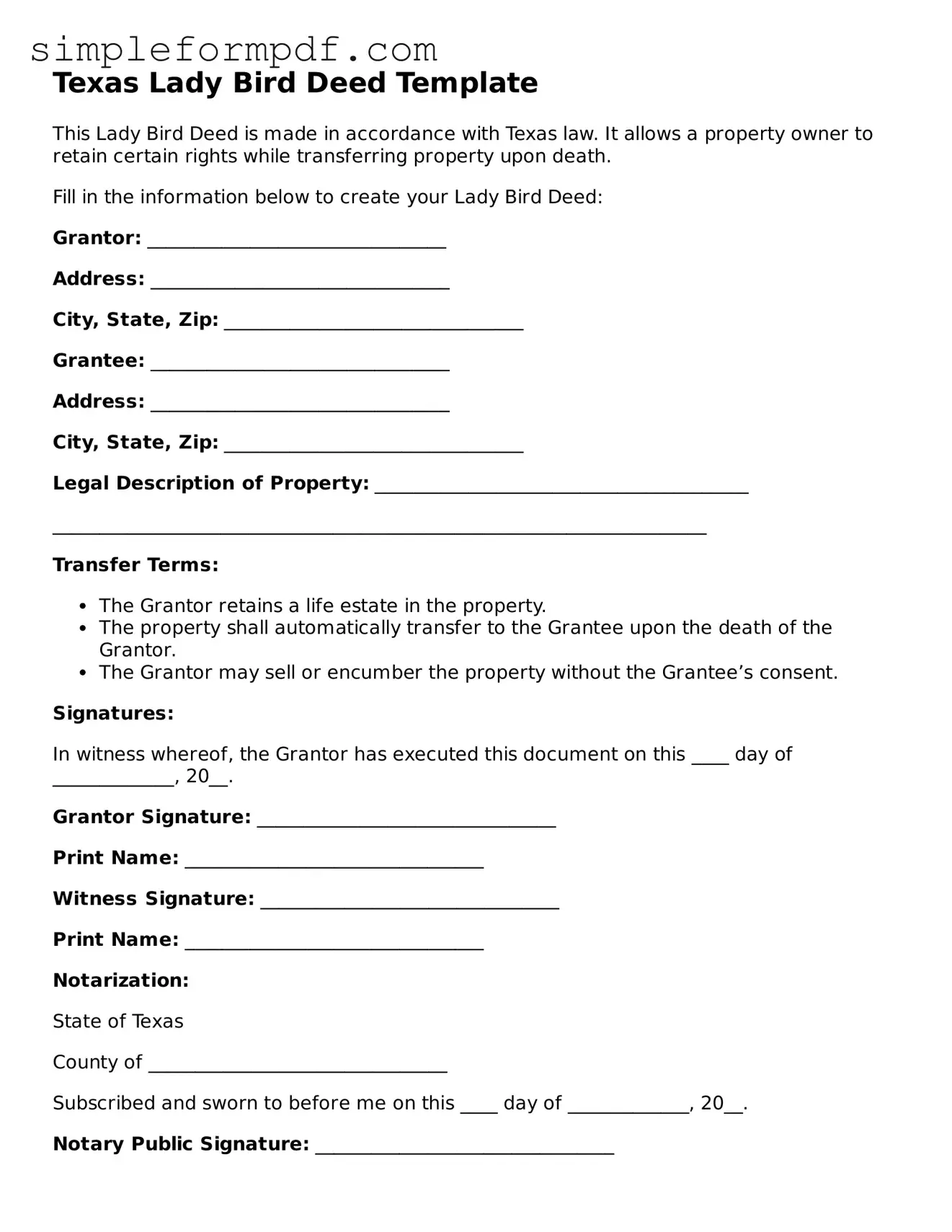Texas Lady Bird Deed Template
This Lady Bird Deed is made in accordance with Texas law. It allows a property owner to retain certain rights while transferring property upon death.
Fill in the information below to create your Lady Bird Deed:
Grantor: ________________________________
Address: ________________________________
City, State, Zip: ________________________________
Grantee: ________________________________
Address: ________________________________
City, State, Zip: ________________________________
Legal Description of Property: ________________________________________
______________________________________________________________________
Transfer Terms:
- The Grantor retains a life estate in the property.
- The property shall automatically transfer to the Grantee upon the death of the Grantor.
- The Grantor may sell or encumber the property without the Grantee’s consent.
Signatures:
In witness whereof, the Grantor has executed this document on this ____ day of _____________, 20__.
Grantor Signature: ________________________________
Print Name: ________________________________
Witness Signature: ________________________________
Print Name: ________________________________
Notarization:
State of Texas
County of ________________________________
Subscribed and sworn to before me on this ____ day of _____________, 20__.
Notary Public Signature: ________________________________
Notary Public Seal: ________________________________
